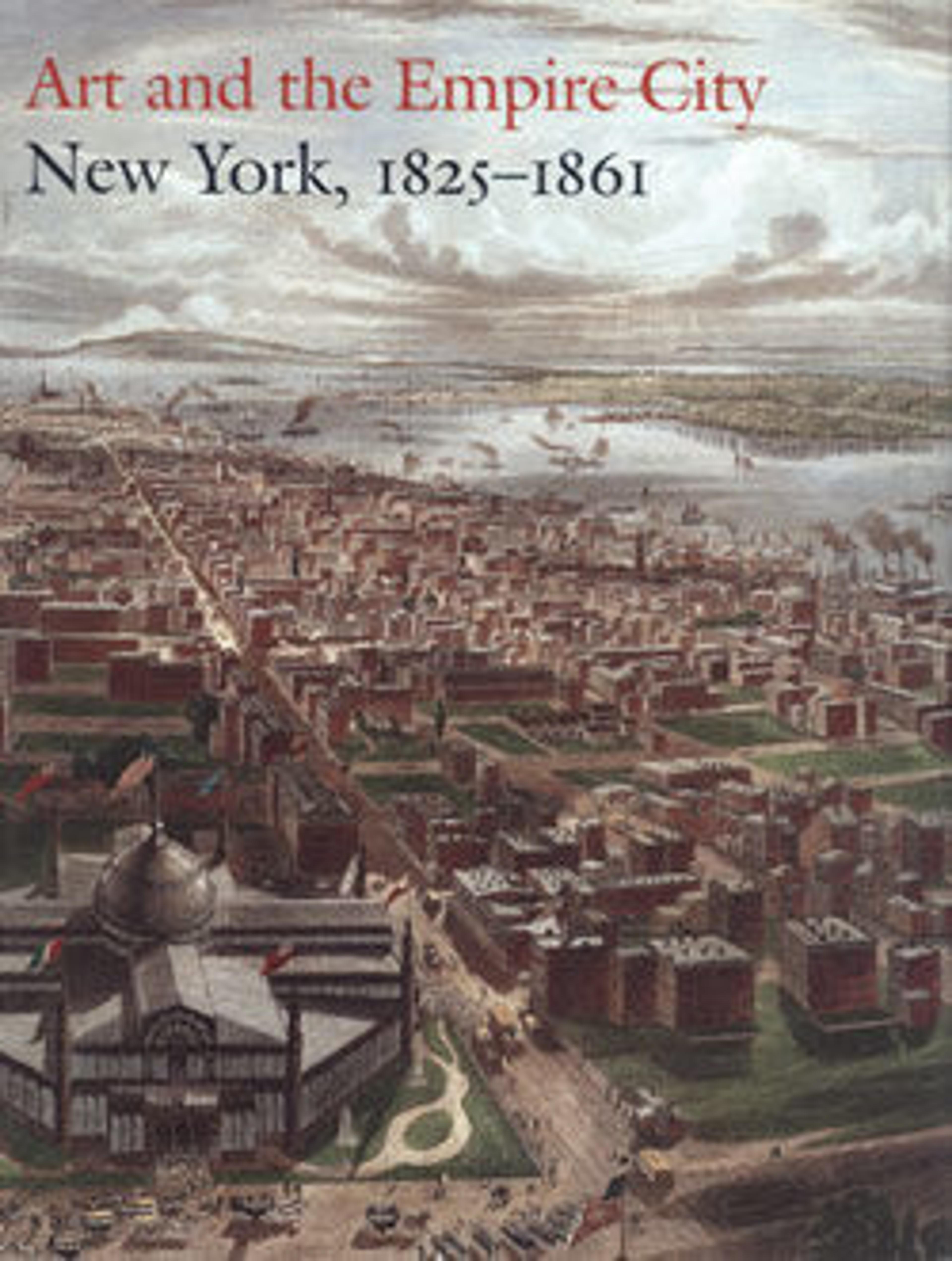New York from the Steeple of St. Paul's Church, Looking East, South, and West
This panorama captures a bustling lower Manhattan in 1849. Taken from the tower of St. Paul’s Chapel on Broadway, just below City Hall Park, the view includes P. T. Barnum’s famous museum at lower left, which stood at the junction of Broadway, Park Row and Ann Street from 1841 to 1865. Horse-drawn omnibuses and pedestrians crowd the street below and a rooftop sign at right identifies Mathew Brady's Daguerrean Miniature Gallery, where New Yorkers had their photographs taken. Above the projecting roof, Fulton Street recedes towards the East River and, at right, Broadway moves south past the towered Main Post Office facing Nassau Street; Trinity Church at Wall Street; its spire, completed in 1846, would remain the city’s tallest structure until 1890.
Artwork Details
- Title:New York from the Steeple of St. Paul's Church, Looking East, South, and West
- Etcher:Henry A. Papprill (British, 1817–1896)
- Artist:After John William Hill (American (born England), London 1812–1879 West Nyack, New York)
- Publisher:Henry J. Megarey (American, 1818–1845 New York)
- Date:1849
- Medium:Color aquatint and etching; second state of three
- Dimensions:image: 21 1/4 x 36 3/16 in. (53.9 x 91.9 cm)
sheet: 25 3/16 x 38 7/16 in. (64 x 97.7 cm) - Classification:Prints
- Credit Line:The Edward W. C. Arnold Collection of New York Prints, Maps and Pictures, Bequest of Edward W. C. Arnold, 1954
- Object Number:54.90.587
- Curatorial Department: Drawings and Prints
More Artwork
Research Resources
The Met provides unparalleled resources for research and welcomes an international community of students and scholars. The Met's Open Access API is where creators and researchers can connect to the The Met collection. Open Access data and public domain images are available for unrestricted commercial and noncommercial use without permission or fee.
To request images under copyright and other restrictions, please use this Image Request form.
Feedback
We continue to research and examine historical and cultural context for objects in The Met collection. If you have comments or questions about this object record, please contact us using the form below. The Museum looks forward to receiving your comments.
